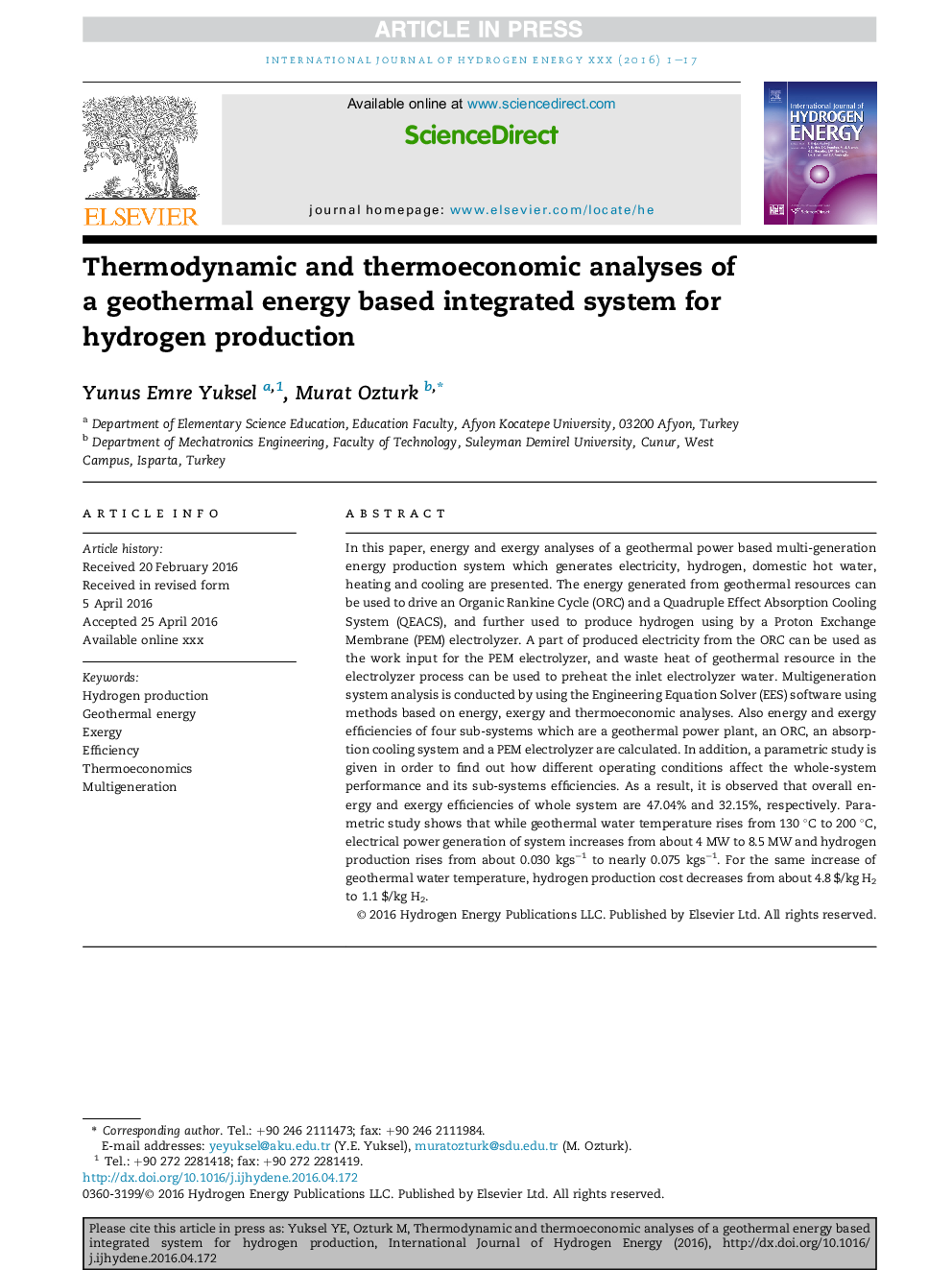| Article ID | Journal | Published Year | Pages | File Type |
|---|---|---|---|---|
| 5146550 | International Journal of Hydrogen Energy | 2017 | 17 Pages |
Abstract
In this paper, energy and exergy analyses of a geothermal power based multi-generation energy production system which generates electricity, hydrogen, domestic hot water, heating and cooling are presented. The energy generated from geothermal resources can be used to drive an Organic Rankine Cycle (ORC) and a Quadruple Effect Absorption Cooling System (QEACS), and further used to produce hydrogen using by a Proton Exchange Membrane (PEM) electrolyzer. A part of produced electricity from the ORC can be used as the work input for the PEM electrolyzer, and waste heat of geothermal resource in the electrolyzer process can be used to preheat the inlet electrolyzer water. Multigeneration system analysis is conducted by using the Engineering Equation Solver (EES) software using methods based on energy, exergy and thermoeconomic analyses. Also energy and exergy efficiencies of four sub-systems which are a geothermal power plant, an ORC, an absorption cooling system and a PEM electrolyzer are calculated. In addition, a parametric study is given in order to find out how different operating conditions affect the whole-system performance and its sub-systems efficiencies. As a result, it is observed that overall energy and exergy efficiencies of whole system are 47.04% and 32.15%, respectively. Parametric study shows that while geothermal water temperature rises from 130 °C to 200 °C, electrical power generation of system increases from about 4 MW to 8.5 MW and hydrogen production rises from about 0.030 kgsâ1 to nearly 0.075 kgsâ1. For the same increase of geothermal water temperature, hydrogen production cost decreases from about 4.8 $/kg H2 to 1.1 $/kg H2.
Related Topics
Physical Sciences and Engineering
Chemistry
Electrochemistry
Authors
Yunus Emre Yuksel, Murat Ozturk,
